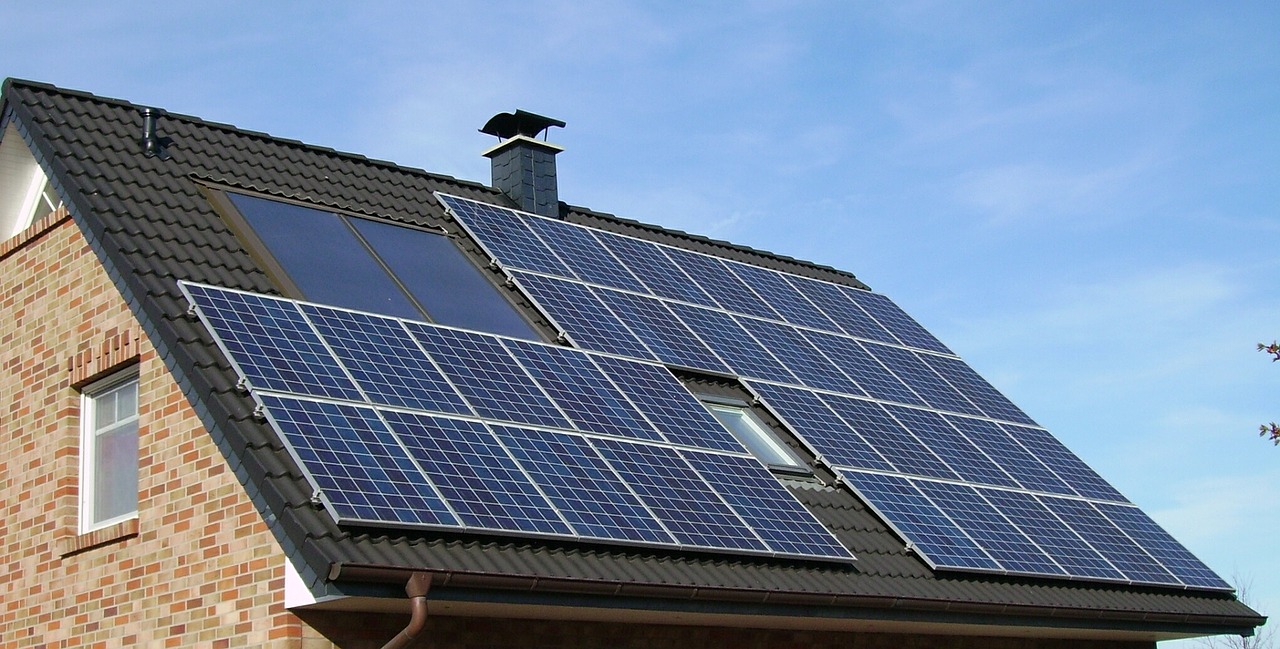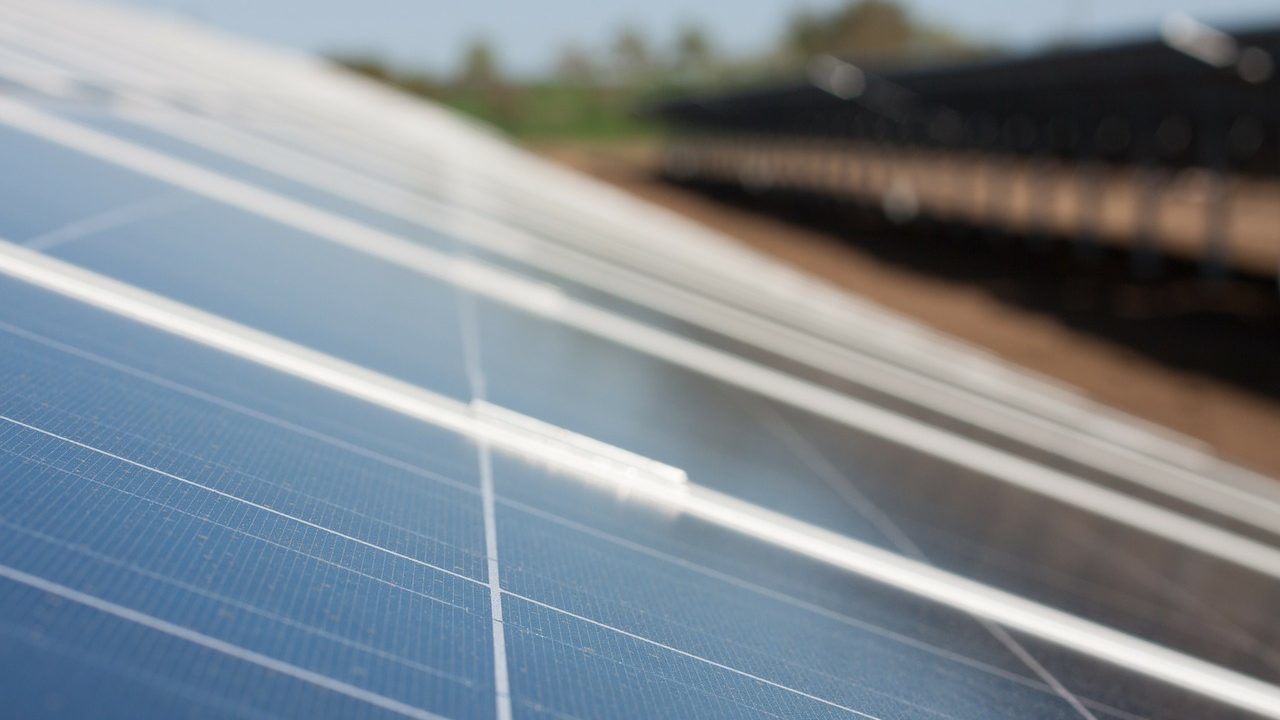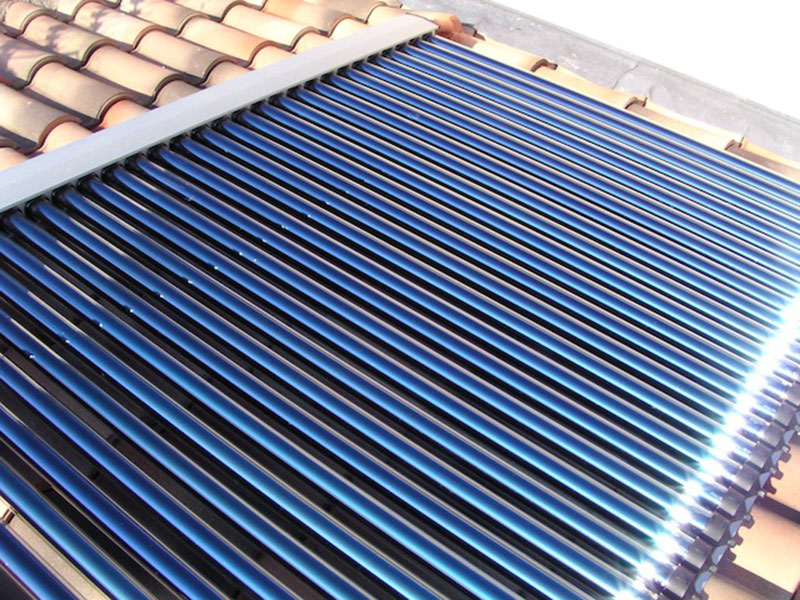There are 2 different types of solar panels; the core difference between a solar PV panel and a solar thermal panel can be found in the working principles.
Solar Photovoltaic panels (commonly called Solar PV panels) generate electricity from the sun’s light using a photovoltaic effect. A photon (the basic unit of light) impacts a surface made of a special material which then generates the release of what is known as an electron. This reaction produces electricity that we can convert and use immediately (or optionally store for use later).
Solar Thermal panels although somewhat less sophisticated, use sunlight to heat a fluid within the panel collectors which can either been a flat panel or evacuated tubes. The main use is to provide water heating, and are normally installed in conjunction with central heating systems (gas or oil).
In this article we’ll explore the differences and features of each type of solar panel installation.
Solar Panels for Electricity – Solar Photovoltaic (Solar PV)

Solar PV panels contain cells that are made from layers of semi-conducting material, usually silicon. When sunlight shines on the cell it creates an electric field across the layers. The stronger the sunshine, the more electricity is produced.
The solar panels capture energy from the sun and convert it into DC electricity, which is not useable in the domestic setting, so the panels are hooked up to a small but highly efficient inverter which in turn converts the DC energy in usable AC. The inverter is usually installed inside your home, although smaller or micro versions are now available that fit onto the back of individual panels.
Read more about how Solar PV Panels work
What size solar panels will I need and where can I install them?
Solar PV panels or modules are typically mounted on or within your roof, but can be installed in other areas of your property like a sunny spot in the garden. The panels come in a variety of shapes and sizes, but you can also fit solar roof tiles.Solar electric panels are rated according to their performance in optimum conditions (i.e. direct sunlight during summer time or – to get technical – under full solar radiation). This is expressed as kilowatts peak (kWp).
A typical domestic setup will be rated somewhere between 3.5kWp and 4kWp – but the exact specification will depend on a variety of factors such as the size of the house, number of occupants and current/future electricity needs. Depending on the modular system installed you can would require around 8m2 of roof space per kWp.
As a rule, 1kWp of solar PV panels installed on a south-facing roof at a good pitch will provide around 800-1,000kWh of electricity per year. This will vary according to your home’s location in the UK – a well-oriented roof in the Devon countryside is likely to get more sun than an inner-city equivalent in Liverpool, for example.
Read the Which? guide to Solar PV panel installation here
How efficient are solar PV panels?
On average, a 3.5kWp solar setup might deliver 2,800 to 3,500kWh of electricity – which equates to the majority of an average household’s annual electricity requirement. However it’s important to understand that you cannot expect to rely on the panels all year round.
In the UK, as you’d expect, output is highest from May to August. Whilst the panels will still provide electricity in winter, they’re likely to deliver only 10% of their annual total over this period. If you’re taking advantage of the Feed-In Tariff you will be able to offset the cost of the energy you buy during the winter months with the payments for generation and export when you’re producing surplus electricity.
The lifespan of a solar PV array is considered to be around 25 years but the inverter is likely to need replacing at least once during that period. You can maximize its durability by ensuring it’s properly specified to suit your setup and maximize electricity production. According to the Energy Saving Trust, a 3kWp system would typically need an inverter rated between 2,400 and 3,300 Watts.
Will solar PV panels suit my home?
Some homeowners do not consider solar panels simply because they don’t have a south-facing roof. However, a well-specified installation can actually fulfil a significant proportion of your household’s electricity requirements. This is true even in an easterly or westerly configuration can work. Similarly, while a 30° to 40° roof pitch is best panels can still soak up enough light at other angles.
Even if you live in an area that’s overcast, you can still get enough sunlight for the panels to function. Bright direct sunshine is certainly an advantage but photovoltaic cells can generate plenty of electricity just from diffused daylight, so they’ll continue to operate on cloudy days.
Do, however, watch out for potential sources of shade that might diminish the performance of your solar panels. Common culprits include nearby trees, overlooking buildings and chimneystacks. It’s surprising how often the design of a new home fails to account for this; though it is of course more difficult to avoid with existing buildings.
You can read more about solar PV panel suitability here
How much do Solar PV panels cost?
We recommend that you obtain more than one quotation in doing so look carefully at the detail of what is being proposed for the price you are paying. Not every solar system is equal – so look into the efficiency ratings of the specified products versus the initial cost and potential tariff payments that you will achieve.
Once your solar panels are installed, it’s important to keep an eye on performance. This helps to ensure you’re using your solar electric to its fullest potential. To achieve this we advise a smart meter is fitted to monitor both how much electricity your household is using and how much is being fed back to the national grid. Depending on the type of meter installed it may also allow you to track how much money you’ve saved through wireless or web-based monitoring programs.
Read more about Solar PV panels here
Solar Panels for Heating & Hot Water – Solar Thermal
Solar thermal panels provide water heating by using heat energy from the sun to work alongside your conventional water heater. Generally solar thermal can provide almost all of your hot water during the summer months and overall about 60% of your annual hot water. This represents a substantial saving versus using fossil fuels to heat water.
The technology is well developed and an effective means of using solar energy in the UK. Solar thermal panels come in 2 varieties; flat plates and evacuated tubes.
Read more about how solar thermal panels work
Flat plate systems
These offer greater installation and flexibility as they can be integrated into the roof for a neater installation. They tend to be more robust and generally considered more aesthetically pleasing. The collectors work by circulating water through the whole panel and therefore are less efficient when compared to evacuated tube types.
Evacuated tubes
Even though these panels can be more expensive they utilise a vacuum to retain heat in the system. The panel comprises a number of individual tubes, each being separately sealed and containing a small amount of a fluid. Heat is extracted by evaporating the fluid in the tube which then condenses at the top, releasing the heat to the fluid circulating in the closed loop. The delivery temperature for evacuated tubes is higher than conventional flat panels and they operate more efficiently
Is my property suitable for solar thermal panels?
The ideal orientation for a solar thermal would be due south, although a southwest or southeast facing roof would also be effective. Shade on the solar panels at any time of the day will reduce the performance. Solar thermal are ideally suited to swimming pools. Most systems have an average lifespan of around 20 years and require very little maintenance. A yearly check by the householder and a more detailed check every 3-5 years should be sufficient.
How much does a solar thermal system cost?
The cost of solar thermal systems can vary from project to project. Pricing will include installation costs and all parts (solar collectors, control panel, pipes, hot water tank). To be able to provide a more accurate costing we recommend a site visit.
The potential differences which may affect the costs:
- If the building has a complicated or antiquated water system
- Installation costs will be higher if scaffolding is required
- The cost of integrating with a current system could also add further expense
The size of system (the number of collectors and water cylinder capacity) you will require depends on the hot water demand of your home or business. A general rule of thumb is that you’ll need 1m² for each person living in the building. Solar thermal collectors are usually around 2-3m², so for an average 3-4 bedroom house you will require 2 collectors. As the average person will use around 50 litres of hot water each day, a normal 4 bedroom house will require a 200 litre tank.
The quality of collector used also impacts upon the total initial cost of the project. As noted already, evacuated tube systems cost slightly more than flat panel systems, but are more efficient.
Potential savings when using solar thermal
The potential savings offered by solar thermal systems depend on a large range of factors. These include:
- Initial system cost (depending on size, quality of parts and installation)
- The energy source that you are replacing (coal, gas, electricity, LPG, oil, etc.)
- The property’s suitability for solar panels (and the total output of the system – usually between 1000-2500kWh in the UK)
- The property’s energy efficiency
- Eligibility for the RHPP and RHI
- Your geographical location and solar resource
- Available financing incentives
- The cost of the fuel you use for your backup water heating system, if you have one
- Your energy needs (the solar thermal system will not provide all of your hot water needs)
Whatever your situation or requirement, we can help you to understand all of the costs and benefits of installing solar thermal panels.
Read more about solar thermal panels here








